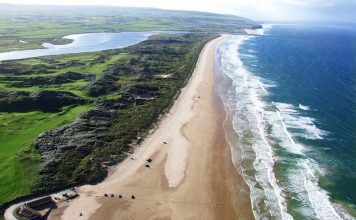The Grand Canyon is one of the most amazing natural wonders of the world. It is a steep-sided canyon carved by the Colorado River in the high plateau region of northwestern Arizona, USA. It is famous for its stunning scenery, colorful rocks, diverse wildlife, and rich history. Here are some interesting facts about the Grand Canyon that you may not know:
How the Grand Canyon was formed and why it has different colors
The Grand Canyon was formed by the erosion of the Colorado River and its tributaries over millions of years. The river cut through layers of rock that were deposited by ancient seas, rivers, deserts, and volcanoes. The oldest rocks at the bottom of the canyon are about 2 billion years old, while the youngest ones at the top are about 230 million years old. The different colors of the canyon walls are caused by trace amounts of minerals in the rocks. Iron gives red, yellow, and green hues, while copper gives blue and purple hues. The colors also change with the angle of the sun and the weather conditions.
The best places and times to see the Grand Canyon
The Grand Canyon is 277 miles (446 km) long, up to 18 miles (29 km) wide, and over a mile (1.6 km) deep. It has two main rims: the North Rim and the South Rim. The North Rim is higher, cooler, and less crowded than the South Rim, but it is also more remote and closed during winter. The South Rim is open all year round and has more facilities and viewpoints. Some of the most popular places to see the Grand Canyon are Grand Canyon Village, Desert View, Bright Angel Trail, Phantom Ranch, Havasu Falls, and Skywalk. The best time to see the Grand Canyon is during spring or fall, when the temperatures are mild and the crowds are smaller. The winter season also offers beautiful views with snow on the rim, but some roads and trails may be closed. The summer season is hot and busy, but also offers spectacular thunderstorms and rainbows.
The myths and legends inspired by the Grand Canyon
The Grand Canyon has been inhabited by humans for thousands of years. Many Native American tribes consider it a sacred place and have their own stories and beliefs about its origin and meaning. For example, the Hopi tribe believes that their ancestors emerged from an underground world through a sipapu, or a small hole, in the canyon. The Navajo tribe calls it Tsékooh Hatsoh, or “the place where water runs through rocks”, and believes that it was created by a mythical hero named Nayenezgani. The Paiute tribe calls it Kaibab, or “mountain lying down”, and believes that it was once a giant who turned to stone after being killed by Coyote.
The effects of the Grand Canyon on animals, humans, and technology
The Grand Canyon is home to more than 1,500 plant species, 355 bird species, 89 mammal species, 47 reptile species, 9 amphibian species, and 17 fish species. Some of the animals that live in or near the canyon are bighorn sheep, mountain lions, elk, mule deer, coyotes, bobcats, squirrels, ravens, condors, eagles, hawks, owls, bats, rattlesnakes, lizards, frogs, trout, and sturgeon. The Grand Canyon also affects humans and technology in various ways. For example, some people may experience altitude sickness or dehydration due to the high elevation and dry climate of the canyon. Some people may also feel awe or wonder when they see the canyon for the first time. Some technology may be disrupted or damaged by the canyon’s geomagnetic field or by solar storms that cause auroras or power outages.














